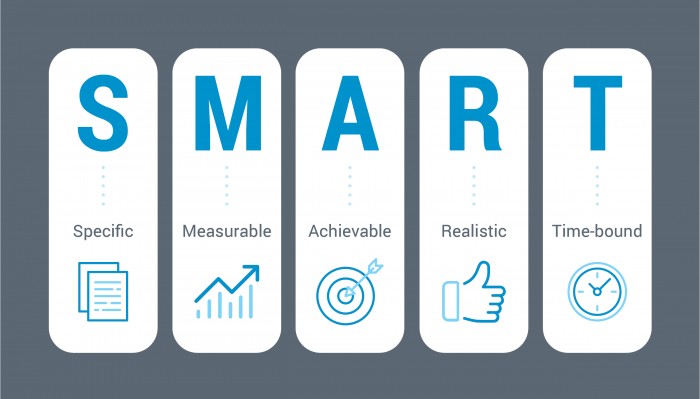We all may be hesitant to admit it, but 2023 will be here before we know it. And that means now is the time to start developing your marketing plan for 2023. Building a marketing plan isn’t a wasted exercise; it’s essential to reaching or exceeding your organization’s goals. Twenty-three percent of companies are exceeding their revenue goals—and of those not exceeding their goals, 74% don’t know the number of monthly visits, leads, marketing qualified leads (MQLs), or sales opportunities they need.
Use these 4 steps to build your marketing plan
Even humble goals can be difficult to reach unless you have a firm grasp on what it takes to get there. This is where a solid marketing plan comes in. Not only does a plan create clarity and understanding for your marketing team or company at large, it provides direction and gives teams common goals to work toward.
Here are 4 simple steps that will help guide you to a strategic marketing plan that delivers results in the coming year and sets you up for continued success down the road.

Download the 4 steps (30 KB PNG)
1. Review your 2022 marketing plan
As you begin planning for 2023, it’s important to start by analyzing 2022. With a critical eye, take time to identify what worked in the previous year and what didn’t. Evaluate the reasons for both and consider ways to either build on successes or avoid making the same mistakes again. Here are some questions to get the ball rolling:
- Were your goals clear, concise, and realistic?
- Did your marketing goals align with your business goals?
- Were resources adequate to achieve your goals?
- Did your audience shift? Or did you maybe not have a clear enough understanding of them to start with?
- Was your measure for success consistent throughout the year?
2. Analyze market landscape changes
It’s a safe bet your industry and/or organization have experienced some changes during the past year. Keep in mind that those changes might have an impact on your 2023 marketing strategy.
Let’s start with your target audience. Is it still the same, or do you need to adjust? Are the customers you want the same customers you targeted last year? Also consider whether your customers’ expectations and preferences have changed.
Next, think more broadly about your industry as a whole and how the global environment has impacted it. Have shipping delays increased delivery times? Have technology advances opened-up new marketing opportunities?
Consider your competitors as well, and where your organization ranks. If a competitor is scooping up more market share, find out why. Pay attention to the marketing channels your competitors use and the messaging that is or isn’t resonating.
Revisit marketing tactics that you may have previously crossed-off the list that may now be suitable due to industry changes.
All these factors should help drive your marketing plan. Knowing the answers to these questions will help ensure your marketing efforts are directed toward the environment in 2023 and not based on past assumptions.
3. Set SMART goals + KPIs
The goals you set for your marketing should directly tie to your organization’s high-level business goals. If one of your business goals is to increase sales by 20%, then one of your marketing goals should be to generate leads for sales. If your organization wants to grow within a particular space, marketing should support that by creating and distributing messages to that audience.
The goals you outline must be Specific, Measurable, Attainable, Realistic, and Timely (SMART). Each goal should also have key performance indicators (KPI) associated with it. It could be a number or percentage. We recommend setting incremental KPIs to assess progress throughout the year. Tracking and reporting progress along the way to keep goals top of mind. Regular check-ins provide opportunities for your team to adjust KPIs if necessary. Your plan should document how often your team will review KPIs and how progress toward goals is reported to company leadership.

4. Outline tactics
This is the tactical part of your marketing plan. It’s where your team outlines how you’ll achieve your goals. To do this, keep the paid, earned, owned ecosystem in mind. A successful marketing strategy typically includes tactics within each of these three buckets and employs consistent messaging across all tactics.
- Paid – tactics include paid search, social media ads, sponsored content, and digital ads.
- Earned – includes public relations efforts, social media engagement and organic search
- Owned – refers to tactics such as automated marketing, content strategy, website, social media platforms, and email.
Planning is a collaborative adventure, folks.
Whether you’re a one-person or ten-person team, it’s important to give key stakeholders the opportunity to review and speak into your plan. Making sure key stakeholders’ voices are heard and their feedback noted will help create shared ownership of the plan and can be critical to its overall success. It’s also important to develop a roll-out strategy for communicating the marketing plan more broadly with your organization. This will let people know the expectations of how they can contribute and assist.
Be flexible + be ready.
Planning puts you in control of your marketing efforts to maximize their impact. Being proactive gives you the ability to be highly reactive in your efforts if an unexpected situation should arise. Because, as we in the post-COVID-19 world know, even the best laid plans are subject to change. Make sure your plan (and your mindset) is clear but agile enough to react.
